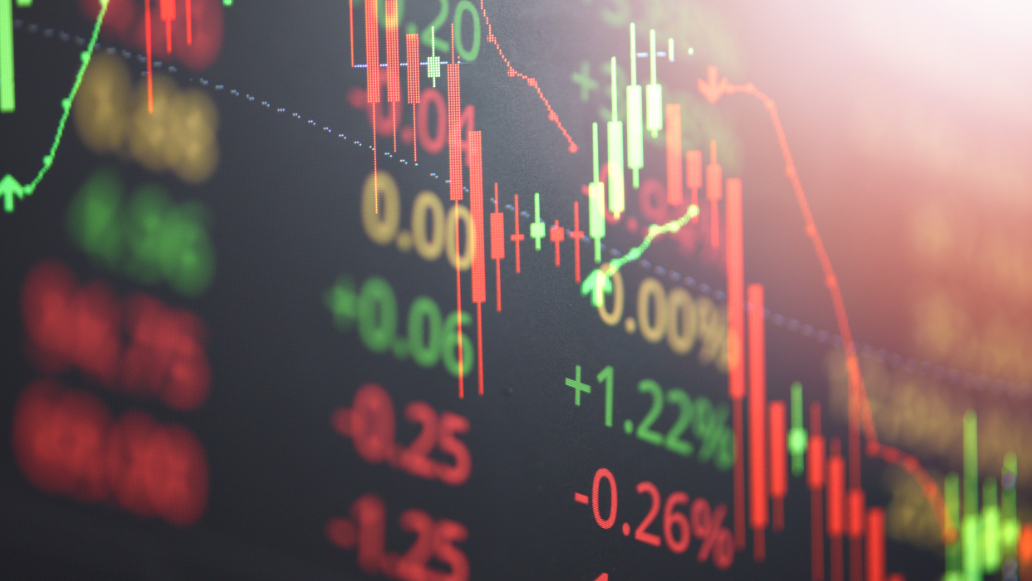
Will inflation slow down the net-zero transition?
There have been assertions that ongoing high levels of global inflation could delay decarbonisation, but investor perceptions suggest that this will not be the case.
For some time now, experts have tried to model the effect of decarbonisation on inflation. Will a switch to renewables mean higher energy prices? Will it mean higher cost of production? These questions are worth asking but, considering the circumstances, it might be time to think about it the other way around: if inflation persists, does it slow down the transition?
Rising prices are almost always met with angst. For good reason: historically, when inflation of above 5% comes knocking, economic carnage is not far behind. For a year now, central bankers, financial markets, companies and consumers have been perturbed by inflation anxiety: in 2022, prices rose by a global average of 8.8%. In 2023, estimates suggest the figure will be 6.6%. Inflation is here to stay.
Does that make it less likely that capital finds its way into transition assets? Theory and history provide some evidence, but any substantive conclusion needs to be embedded in context.
As interest rates rise, financing investments in green technologies will become more expensive, generating the risk that higher costs of capital may slow down the pace of decarbonisation.
Cost of capital
To tame inflation, central banks have pulled the interest rate leaver. Most have raised rates at an unprecedented pace – “aggressive tightening” as it is known in the lingo. The tightening raises the cost of capital in the economy.
Renewable energy assets, such as wind or solar farms, are capital intensive in that they involve relatively high up-front costs. This makes the cost of financing the asset a variable to look out for.
In a recent speech, Isabel Schnabel, a member of the European Central Bank’s executive board, said: “As interest rates rise, financing investments in green technologies will become more expensive, generating the risk that higher costs of capital may slow down the pace of decarbonisation”
So, all other things being equal, higher interest rates could lead to lower investment in renewables.
However, Markus Zimmer, senior economist at Allianz SE, told Net Zero Investor that a high interest rate environment should not harm the transition. He said that when it comes to the return or output of renewables, the cost of capital is “of minor importance”.
Zimmer added: “Higher return expectations should lead to more capital available for real investments. The era of ‘financialisation’ – boosting returns by financial engineering and leverage – should come to an end, together with the end of zero interest rates. The bottleneck for renewables remains the pipeline of projects and technology, such as hydrogen.”
Hence, all is never constant. Other factors play a role. The urgency of the transition and the investment horizon of green money, for example, could change the calculus.
Asha Khoenkhoen, spokesperson for Dutch pension fund ABP, said that although high interest rates are “not conducive to investments”, it is ABP’s fiduciary duty to provide participants with “a good pension in a liveable world”.
She told Net Zero Investor: “A liveable world requires that we limit global warming to 1.5°C [and] it requires a sustainable economy, therefore ABP will look at all its investments differently and from that angle.
“The energy transition is what is needed and the way forward, and we want to contribute in a positive and measurable way with our investments to the climate transition. We also want to encourage companies in which we invest to embrace the climate transition.”
The recession and falling profits might lead to the postponement of some investment projects. But the urgency of the transition has only increased.
Fossil fuel dependence
A related concern is whether a rising energy bill pushes governments back into fossil fuel dependence. The hypothesis here is that an energy crisis, like the 2022 episode, makes strategy myopic: governments prioritise security of supply (a short-term need) over the structure of supply (long-term goal).
As the IEA noted: “High prices are encouraging some countries to step up fossil fuel investment, as they seek to secure and diversify their sources of supply.”
However, fiscal realities are context-dependent.
Khoenkhoen argues that one of the factors driving up interest rates is high energy prices, which are partly due to the war in Ukraine. This has created a need for energy security within governments and caused a drive towards investing in renewables.
She said: “After Ukraine, the energy transition was no longer only about fighting climate change, now it is also about energy security.
“Governments have become a lot more serious about the energy transition since the war in Ukraine. That, actually, may also be a factor in feeding interest rate expectations, although not the dominant one – that is inflation.”
Khoenkhoen’s point is also echoed by Zimmer, who said: “The recession and falling profits might lead to the postponement of some investment projects. But the urgency of the transition has only increased, not only driven by climate change but even more by the struggle to regain energy sovereignty in a world in which fossil energy is a weapon.”
The public purse
Lastly, rising prices and interest rates also mean that it is now unwise and more expensive for governments to run deficits. Considering that fiscal policy remains a valuable tool in incentivising decarbonisation, a constraint on green budgets could, in theory, work against the interests of the transition.
Yet, the relation between monetary tightening and green spending is more complex: Schnabel argues that green support is not necessarily against central bank advice: “Viable support schemes for renewable energies and green technologies, such as first-loss guarantees, interest rate subsidies and government-sponsored financing facilities, should be continued and expanded where feasible.”
This sentiment was echoed by Zimmer. “It is very likely that fiscal policy will step into the breach, offering incentives from tax reductions and subsidies to blended finance structures,” he said.




